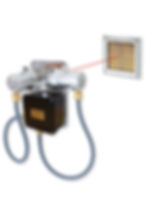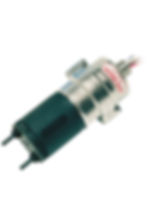
Fixed Detection Systems - Fire and Gas Detection
Environmental Science and Technology provides fixed gas detection systems wherever there is a need for toxic or combustible gas monitoring. These are designed to provide a complete rugged, reliable, fixed-point gas detection system to serve as your first line of defence against gas threats.
These can be used in many challenging environments, including oil and gas exploration, water treatment, chemical plants, steel mills but also in high tech industry, such as automotive, aerospace, research facilities etc. The systems are completely bespoke and have many options available, for example traffic light systems, relay triggered automation, inputs to PLCs etc. Contact us to find out more and arrange for a meeting.
Toxic Gases and Oxygen Detectors
Toxic gas and oxygen detectors work by allowing gases to diffuse through a porous membrane to an electrode where it is either chemically oxidized or reduced. The amount of current produced is determined by how much of the gas is oxidized at the electrode, indicating the concentration of the gas. The sensors are subject to corrosive elements or chemical contamination and may last only 1–2 years before a replacement is required. Electrochemical gas detectors are used in a wide variety of environments such as refineries, gas turbines, chemical plants, underground gas storage facilities, and more.
Flammable Gas Detectors
Flammable gas detectors (LEL detectors) precisely monitor the lower explosive limit (%LEL) of flammable gasses in your facilities. Normal catalytic bead LEL sensors are good for the detection of hydrogen and organic flammable gases in most circumstance.
However, they are prone to poisoning in the presence of silanes, silicones, silicates, lead compounds, acidic gases (HCl, HF , H2S), carbon disulfide, dimethyl disulfide, and trimethyl disulfide, as well as phosphate esters, nitro compounds. In these circumstances infrared (IR) sensors are far superior (except for the detection of hydrogen).
Controllers
Key Words:
fire and gas detection, ammonia detector, co2 detector, carbon dioxide detector, hydrogen detector, h2s detector, lpg gas detector, fixed gas detector, natural gas alarm, flame detector




































